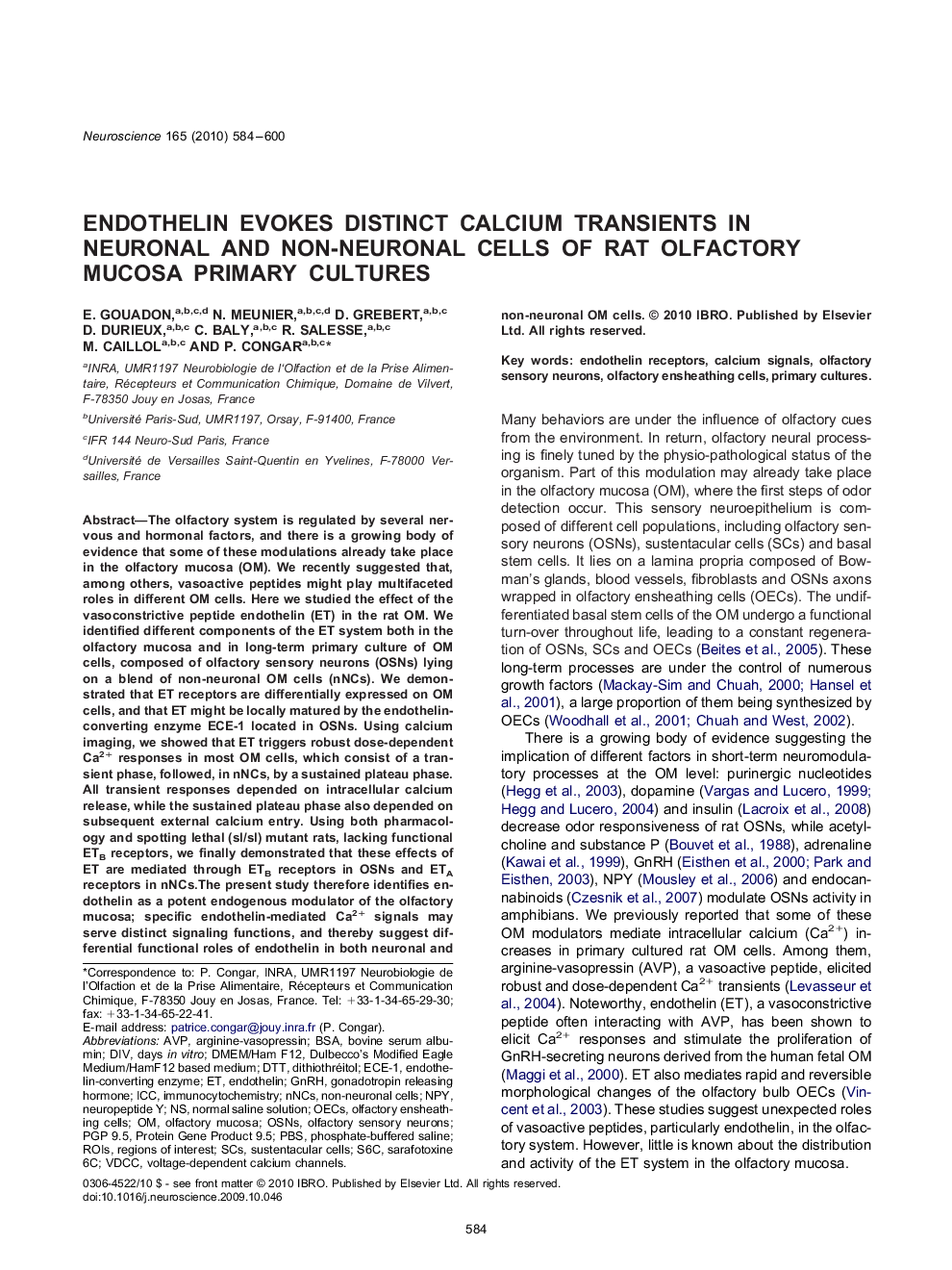| Article ID | Journal | Published Year | Pages | File Type |
|---|---|---|---|---|
| 4339713 | Neuroscience | 2010 | 17 Pages |
The olfactory system is regulated by several nervous and hormonal factors, and there is a growing body of evidence that some of these modulations already take place in the olfactory mucosa (OM). We recently suggested that, among others, vasoactive peptides might play multifaceted roles in different OM cells. Here we studied the effect of the vasoconstrictive peptide endothelin (ET) in the rat OM. We identified different components of the ET system both in the olfactory mucosa and in long-term primary culture of OM cells, composed of olfactory sensory neurons (OSNs) lying on a blend of non-neuronal OM cells (nNCs). We demonstrated that ET receptors are differentially expressed on OM cells, and that ET might be locally matured by the endothelin-converting enzyme ECE-1 located in OSNs. Using calcium imaging, we showed that ET triggers robust dose-dependent Ca2+ responses in most OM cells, which consist of a transient phase, followed, in nNCs, by a sustained plateau phase. All transient responses depended on intracellular calcium release, while the sustained plateau phase also depended on subsequent external calcium entry. Using both pharmacology and spotting lethal (sl/sl) mutant rats, lacking functional ETB receptors, we finally demonstrated that these effects of ET are mediated through ETB receptors in OSNs and ETA receptors in nNCs.The present study therefore identifies endothelin as a potent endogenous modulator of the olfactory mucosa; specific endothelin-mediated Ca2+ signals may serve distinct signaling functions, and thereby suggest differential functional roles of endothelin in both neuronal and non-neuronal OM cells.
